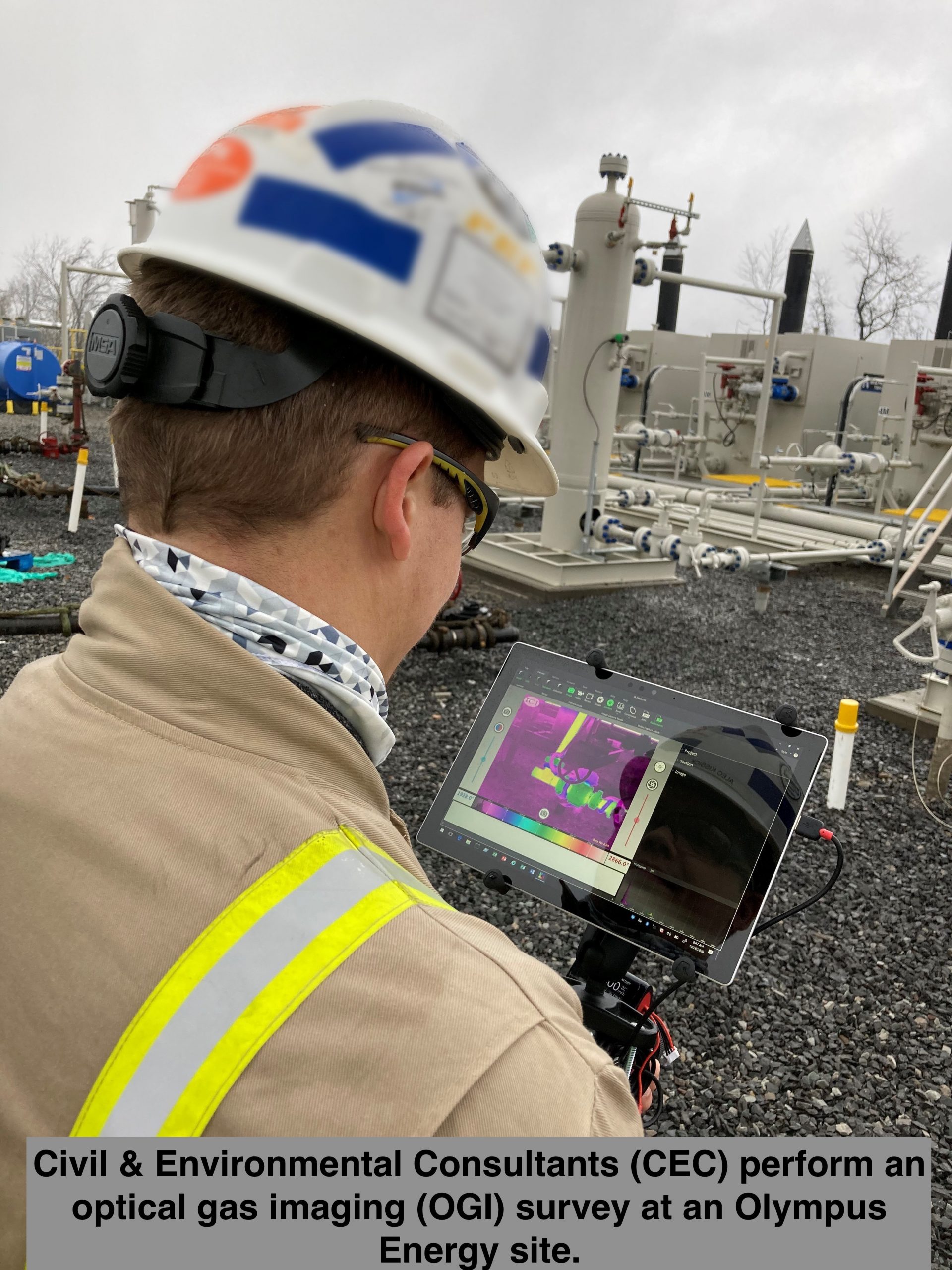Olympus Energy conducts leak detection and repair, commonly referred to as LDAR, on its production facilities, meter stations, and valve yards by utilizing both Unmanned Aerial Vehicles (UAVs) with ground-based optical gas imaging (OGI) and ground surveys. OGI is an innovative thermal imaging technology that is completed by using handheld cameras and drones to survey each site. This monitoring is part of a federally and state regulated program used to identify and repair leaking equipment that might contribute to emissions.
The program consists of five basic elements: 1) Identifying Components, 2) Leak Definition, 3) Monitoring Components, 4) Repairing Components, and 5) Recordkeeping and Reporting. Components include valves, pumps, compressors, pressure relief valves, flanges, connectors, and other forms of piping. Any components that are subject to LDAR requirements must be monitored at specified, regular intervals to determine whether they are leaking. If a leak occurs, the component(s) must be repaired or replaced within a specified time frame. To ensure facilities are in compliance with these procedures, the Environmental Protection Agency (EPA) and the Pennsylvania Department of Environmental Protection (PADEP) requires LDAR inspections to be completed within 60 days of turn in line (TIL) for new oil and gas wells and semi-annually thereafter.
Olympus EHS Representative Shelby Rebrook explained that Olympus goes above and beyond these requirements by performing a self-imposed ‘TIL LDAR’ to ensure no leaks are present on day one of production from any new well. “We want to be sure our equipment is in compliance and working as designed as soon as our gas hits the sales line,” said Rebrook.
Over the course of the last two years (2019 and 2020), Olympus surveyed 18,055 components and only detected 10 minor leaks that were repaired immediately. This survey translates to a 0.055% leak rate. In addition to the leak survey, Olympus also measures its methane intensity each year. ONE Future has set a target methane emissions leakage rate at or below 1% for its oil and gas industry partners. Olympus’s operations for years 2019 and 2020 performed well below this target at just 0.007%.
The benefits of the LDAR program are significant for Olympus and its stakeholders: it reduces emissions, promotes safety for workers and operators, increases environmental protection, reduces product losses, and helps facilities avoid enforcement actions that could curtail operations.
To learn more about this program, please reference the EPA’s LDAR Best Practices Guide.
ABOUT OLYMPUS ENERGY
Olympus Energy LLC (“Olympus”) is a privately-held energy company headquartered in Canonsburg that specializes in upstream and midstream development of natural gas resources in the Appalachian Basin. Olympus has a scalable asset base in southwestern Pennsylvania, having assembled over 100,000 largely contiguous and operated acres within the core Marcellus, Utica, and Upper Devonian fairways. Visit www.olympusenergy.com for additional information.

